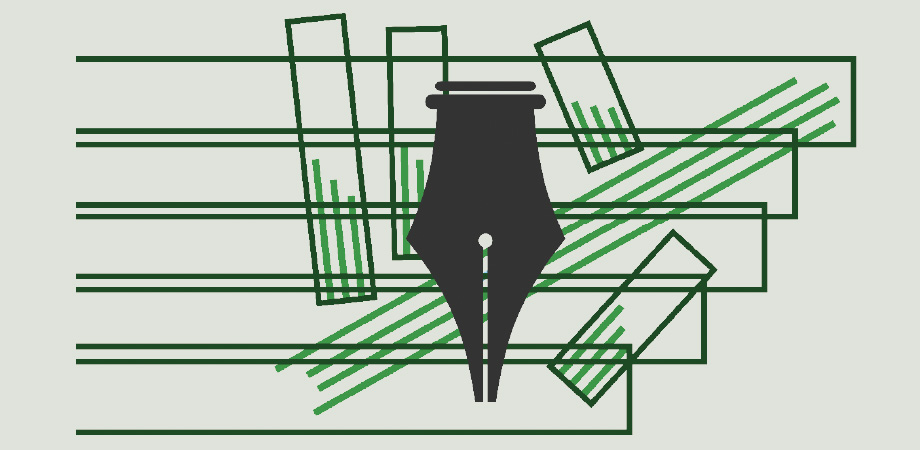
Academic publishing is fraught with potential pitfalls and minefields that can at best cause avoidable delays, or at worst lead to outright rejection. Once the experiments have been conducted, the datasets analyzed, and the results interpreted, the process of sharing your findings with the wider scientific community is largely an art, one that is ultimately crafted by a scientist after many years of trial and error. To assist the novice in deftly navigating the daunting publication obstacle course, the key aspects are classified into the following five tips for scholarly publication.
The most cited science paper is a 1951 seminal work entitled "Protein measurement with the folin phenol reagent." This title is succinct and descriptive, and the subject is clear even to readers outside of the field. A cursory examination of the top 100 cited papers of any journal will reveal that the title is often 12 words or less, and not overly technical. Unfortunately, the title is often neglected by the author group, relegated to a perfunctory afterthought mere days, or even hours, prior to submission.
In fact, an analysis of 140,000 titles from 2007 to 2013 by Adrian Letchford et al. of the University of Warwick revealed an inverse correlation between title length and the number of citations. Admittedly, the interpretation of this result is ambiguous, though a well-constructed, brief, and descriptive title implies a degree of meticulosity that probably extends to the rest of the article, leading to more citations. Moreover, several high-impact journals have strict character count limits for titles. In summary, it's best to keep the title as short and simple as possible without a loss of meaning.
Although most journals will not reject a manuscript without review due to formatting issues, those issues can delay the publication process. In the race to publish that final article before graduation or to avoid getting "scooped," a paper that is littered with grammatical errors or formatting issues will undoubtably undergo multiple rounds of peer review. This repetitive process can be abbreviated by carefully reviewing the submission-guidelines page of the target journal. The formatting requirements and even the organizational structure of an article are journal specific. Therefore, use the journal's template whenever one is available.
A few other common formatting problems include low-resolution images, mislabeled figures, and incorrectly formatted references. These can all be fixed in advance of submission following a careful proofread. Use grammar-checker software like Grammarly to address routine language deficiencies. Nonnative English speakers are encouraged to use a language editing service. As a final step, perform a plagiarism check using an online service such as Turnitin. These simple steps will serve to reduce the review period.
Let's face it, most authors, especially student authors, focus almost exclusively on the impact factor when deciding on a target journal for their newly drafted paper. However, the scope of the journal and the research demographics of its readership are probably far more important factors. Articles that are outside the scope of a journal are typically rejected without review. Ask yourself, are the researchers in my field likely to read or have a subscription to the journal? Have papers similar to mine been published in the journal over the last six months? Are my contemporaries also publishing in this journal?
As a case in point, a newly developed optical technique for early cancer detection may be accepted in a journal of applied medicine with a high impact factor. However, that paper may reach a more targeted audience in an applied optics journal, even though the impact factor is lower. Finally, before responding to an unsolicited email to submit a paper to an unknown journal, ensure that it is reputable and peer reviewed by cross-referencing with well-known predatory publisher lists, such as that by Scholarly Open Access.
A harsh critical review is never a pleasant experience, especially if it seems unfair. Deep-seated feelings of indignation can often provoke an impulsive and emotional response from an author, which will only make the situation worse. Never rush your response to reviewers' comments. Instead, carefully read and think about them before initiating any action. Address each comment or question by either accepting the recommendation and making the appropriate revision, or providing a robust and defendable counterargument in your written response to reviewer comments, which is often included as a cover letter to your revised manuscript. Whenever possible, provide data or citations to support your position.
However, choose your battles wisely and do not argue with the reviewer because you feel slighted. Remember, your objective is to get your paper published. Do not be confrontational or defensive. Ensure that your response succinctly and clearly addresses the reviewer's concern. To assist the reviewer, it is a good idea to emphasize all the revisions in the manuscript by highlighting the changes. Finally, be sure to carefully review your response before submission. If you make things easier for the reviewer, chances are they will recognize your efforts favorably.
So, after months or years of hard work, meticulous manual formatting of your >80 references, and weeks of proofreading to address grammatical issues and image resolution requirements, you learn that your paper is rejected after months in peer review. You've convinced yourself that your results are valid, even excellent, and the reviewers are a collection of grinches. However, you should resist the temptation to resubmit the paper in its current form to a new journal. More likely than not, any flaws that were identified during the initial peer review will simply be reiterated by reviewers for a different journal. Instead, critically examine the manuscript, review tips one through four, and then spend the weeks or months needed to fix it. Most journals will let you resubmit after a specified period of time.
Kert Edward is the Content Development Manager at SPIE.